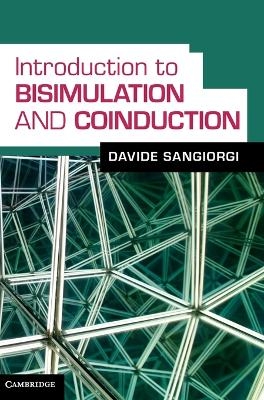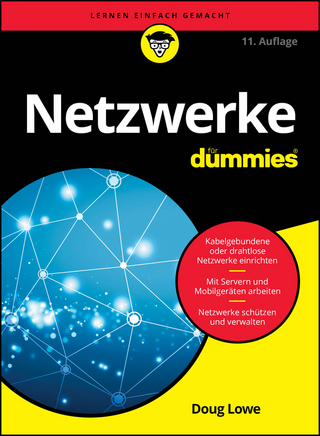
Introduction to Bisimulation and Coinduction
Seiten
2011
Cambridge University Press (Verlag)
978-1-107-00363-7 (ISBN)
Cambridge University Press (Verlag)
978-1-107-00363-7 (ISBN)
Bisimulation and coinduction offer powerful tools for understanding structures that are common in computer science, mathematics and other fields. No other textbook offers a comprehensive treatment of these two concepts. Here, the author teaches the basic theory and how to apply it, with a special emphasis on applications to processes.
Induction is a pervasive tool in computer science and mathematics for defining objects and reasoning on them. Coinduction is the dual of induction and as such it brings in quite different tools. Today, it is widely used in computer science, but also in other fields, including artificial intelligence, cognitive science, mathematics, modal logics, philosophy and physics. The best known instance of coinduction is bisimulation, mainly employed to define and prove equalities among potentially infinite objects: processes, streams, non-well-founded sets, etc. This book presents bisimulation and coinduction: the fundamental concepts and techniques and the duality with induction. Each chapter contains exercises and selected solutions, enabling students to connect theory with practice. A special emphasis is placed on bisimulation as a behavioural equivalence for processes. Thus the book serves as an introduction to models for expressing processes (such as process calculi) and to the associated techniques of operational and algebraic analysis.
Induction is a pervasive tool in computer science and mathematics for defining objects and reasoning on them. Coinduction is the dual of induction and as such it brings in quite different tools. Today, it is widely used in computer science, but also in other fields, including artificial intelligence, cognitive science, mathematics, modal logics, philosophy and physics. The best known instance of coinduction is bisimulation, mainly employed to define and prove equalities among potentially infinite objects: processes, streams, non-well-founded sets, etc. This book presents bisimulation and coinduction: the fundamental concepts and techniques and the duality with induction. Each chapter contains exercises and selected solutions, enabling students to connect theory with practice. A special emphasis is placed on bisimulation as a behavioural equivalence for processes. Thus the book serves as an introduction to models for expressing processes (such as process calculi) and to the associated techniques of operational and algebraic analysis.
Davide Sangiorgi is Full Professor in Computer Science at the University of Bologna, Italy.
Preface; 1. General introduction; 2. Towards bisimulation; 3. Coinduction and the duality with induction; 4. Algebraic properties of bisimilarity; 5. Processes with internal activities; 6. Other approaches to behavioural equivalences; 7. Refinements of simulation; 8. Basic observables; Appendix A. Solutions to selected exercises; List of notations; Bibliography; Index.
| Erscheint lt. Verlag | 13.10.2011 |
|---|---|
| Zusatzinfo | Worked examples or Exercises; 25 Line drawings, unspecified |
| Verlagsort | Cambridge |
| Sprache | englisch |
| Maße | 178 x 254 mm |
| Gewicht | 640 g |
| Themenwelt | Mathematik / Informatik ► Informatik ► Netzwerke |
| Mathematik / Informatik ► Informatik ► Programmiersprachen / -werkzeuge | |
| Mathematik / Informatik ► Informatik ► Theorie / Studium | |
| Mathematik / Informatik ► Mathematik ► Logik / Mengenlehre | |
| ISBN-10 | 1-107-00363-6 / 1107003636 |
| ISBN-13 | 978-1-107-00363-7 / 9781107003637 |
| Zustand | Neuware |
| Informationen gemäß Produktsicherheitsverordnung (GPSR) | |
| Haben Sie eine Frage zum Produkt? |
Mehr entdecken
aus dem Bereich
aus dem Bereich
das Praxisbuch
Buch | Softcover (2024)
Markt + Technik Verlag
19,95 €


